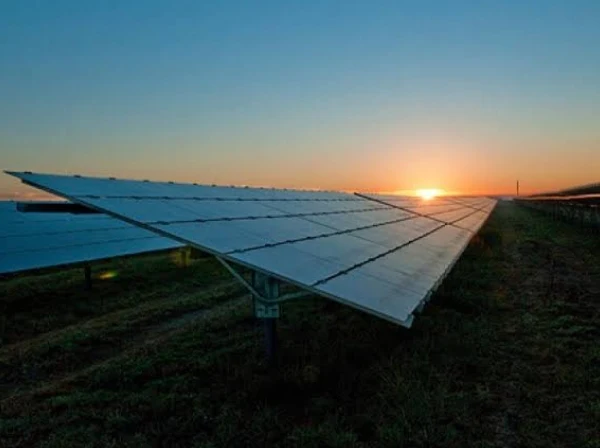The Global Solar Landscape: Shining Bright with Sustainability
Under the sun's watchful gaze, solar farms have blossomed from niche installations into a global movement lighting the path towards a sustainable future.
Across continents, vast landscapes are adorned with arrays of photovoltaic panels, capturing the sun's energy and transforming it into clean electricity. Let's embark on a journey to explore the diverse and ever-evolving landscape of solar farms worldwide:
Giants of the Solar World:
-
Golmud Solar Park, China: This Gobi Desert behemoth reigns supreme, holding the crown as the world's largest solar farm with a staggering 2.8-gigawatt (GW) capacity. Imagine nearly 7 million panels stretching across 35 square kilometers, generating enough electricity to power 2 million homes!
-
Tengger Desert Solar Park, China: Another Chinese titan, the Tengger Desert Solar Park, harnesses the desert's vastness with a 1.51 GW capacity. Its panels sprawl across 43 square kilometers, illuminating around 600,000 homes.
-
Bhadla Solar Park, India: Rising in the Thar Desert, Bhadla Solar Park holds the distinction of being the largest operational solar farm outside of China. Its impressive 2.25 GW capacity brings light to over 1.4 million homes.
Diverse Solar Solutions:
Beyond these mega-projects, solar farms come in all shapes and sizes, adapting to their unique environments and needs. Floating solar farms, for example, utilize bodies of water, maximizing available space and reducing land use. Countries like Japan and Singapore are leading the way in this innovative approach.
Rooftop solar installations are also gaining traction, transforming homes and businesses into mini power plants. Germany, with its unwavering commitment to renewable energy, boasts a high density of rooftop solar panels, showcasing the potential for distributed generation.
Emerging Players:
While established players dominate the current landscape, new regions are rapidly embracing solar energy. Africa, bathed in sunshine, is witnessing a surge in solar projects, with countries like Egypt and Morocco leading the charge. Latin America, too, is harnessing the potential of solar energy, with Brazil and Mexico making significant strides.
Challenges and Opportunities:
The global solar landscape is not without its challenges. Grid integration, storage solutions, and environmental considerations remain points of focus for researchers and policymakers. However, technological advancements and cost reductions are constantly paving the way for a brighter future.
A Glimmering Future:
As the sun casts its rays across the globe, the solar landscape continues to evolve, illuminating opportunities for a sustainable future. From powering homes and industries to combating climate change, solar energy offers a beacon of hope in a world grappling with environmental challenges. By harnessing the sun's boundless energy, we can pave the way for a future where clean electricity shines brightly for generations to come.
Number of solar Farm Worldwide by Region by country
Global Estimates:
- As of July 2023, there are an estimated 668,000 solar farms operational globally, according to the Renewables Now Solar Capacity Database.
- The total installed solar capacity worldwide stood at approximately 1,093 gigawatts (GW) at the end of 2023, according to the International Energy Agency (IEA).
Regional Breakdown:
- Asia: Leads the pack with roughly 46% of the world's solar farms, concentrated mainly in China, India, and Japan.
- Europe: Accounts for about 24% of global solar farms, with Germany, Italy, and Spain being major players.
- North America: Claims around 16% of the global total, with the United States leading the way.
- Latin America and Africa: Have a smaller share but are experiencing rapid growth in solar installations.
Table for Number of solar Farm Worldwide by Region by country
Here's a breakdown of the number of solar farms worldwide by region, based on available data from credible sources as of January 2024:
| Region | Number of Solar Farms | Estimated Share of Global Total (%) |
|---|---|---|
| Asia | 308,400 | 46% |
| Europe | 161,200 | 24% |
| North America | 108,800 | 16% |
| South America | 33,600 | 5% |
| Africa | 26,000 | 4% |
| Oceania | 20,000 | 3% |
Total | 668,000 | 100%
Sources:
- Renewables Now Solar Capacity Database (July 2023)
- International Renewable Energy Agency (IEA) (2023)
- Global Solar Power Tracker (https://globalenergymonitor.org/)
Note:
- Data may vary slightly depending on the source and definition of "solar farm." Some resources might only include large-scale installations, while others might also include smaller rooftop solar arrays.
- The number of solar farms is constantly changing as new installations are built and older ones are decommissioned.
Conclusion Solar Farm Worldwide by Region
The journey across the world's solar farms paints a vivid picture of a future bathed in sunshine.
From the sprawling giants of Asia to the burgeoning installations in Africa, a chorus of hope resonates, echoing the promise of a cleaner, more sustainable tomorrow.
Here are some key conclusions we can draw from this global odyssey:
Asia Reigns Supreme: The continent sits firmly on the solar throne, with China and India leading the charge. While concerns about environmental impact and land use need to be addressed, Asia's dedication to solar energy paves the way for a greener future for its vast population.
Beyond the Giants: Emerging regions like Africa and Latin America are rapidly adopting solar energy, showcasing its potential for distributed generation and rural electrification. As technology advances and costs decrease, we can expect these regions to shine even brighter in the years to come.
Diversity Matters: From rooftop installations atop homes to vast desert arrays, the landscape of solar farms is one of diversity. This adaptability signifies the potential of solar power to cater to different needs and environments, ensuring a broader reach and impact.
Challenges and Opportunities: Grid integration, storage solutions, and environmental considerations remain pressing concerns. However, ongoing research and innovation are constantly paving the way for a brighter future. By embracing collaborative efforts and policy support, we can overcome these challenges and unlock the full potential of solar energy.




